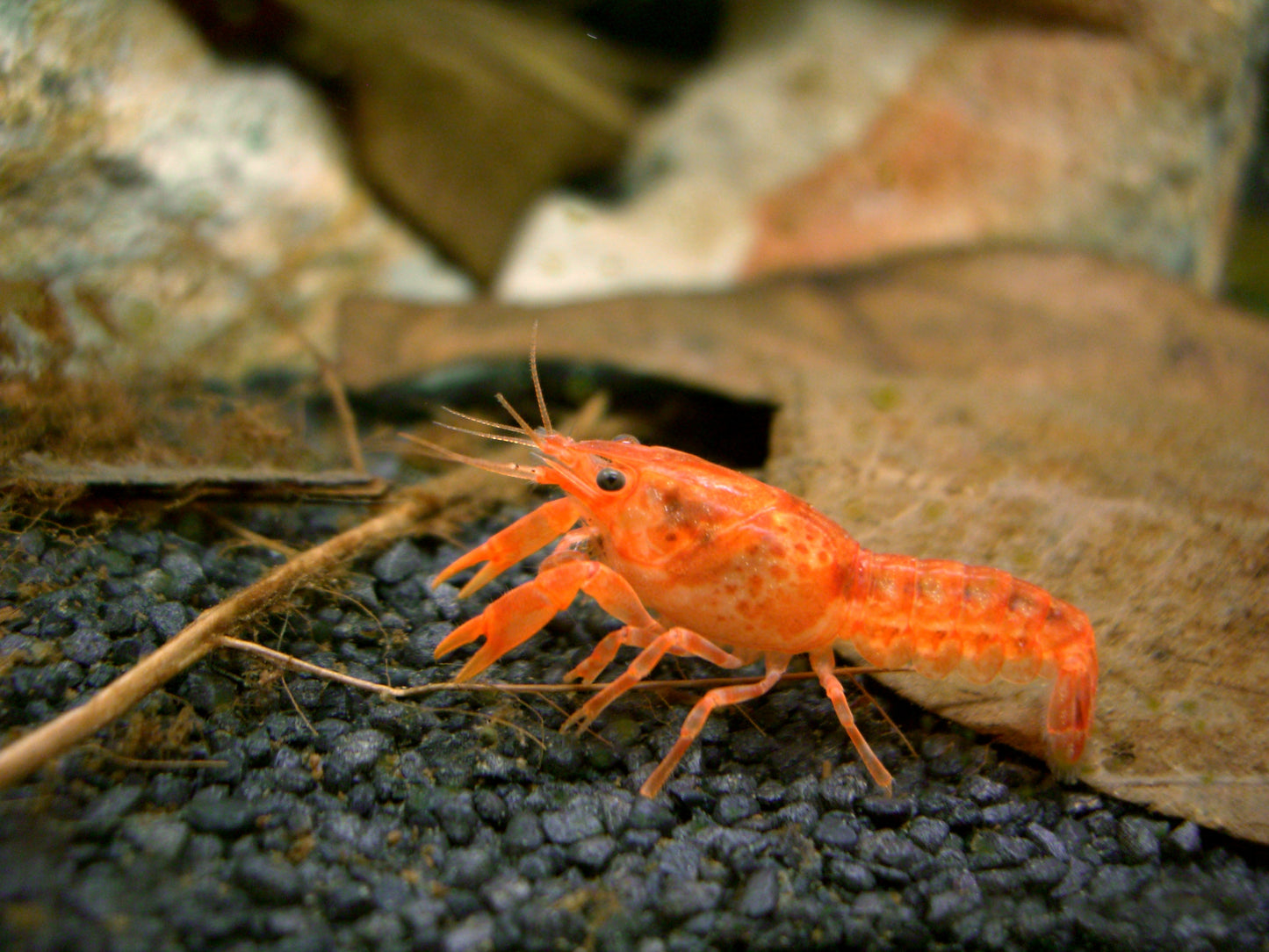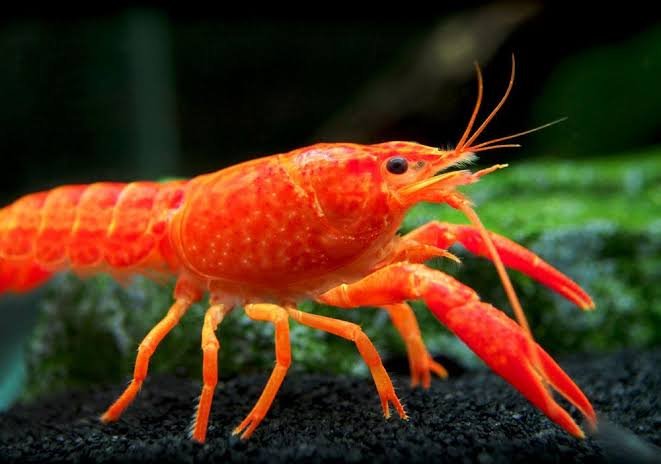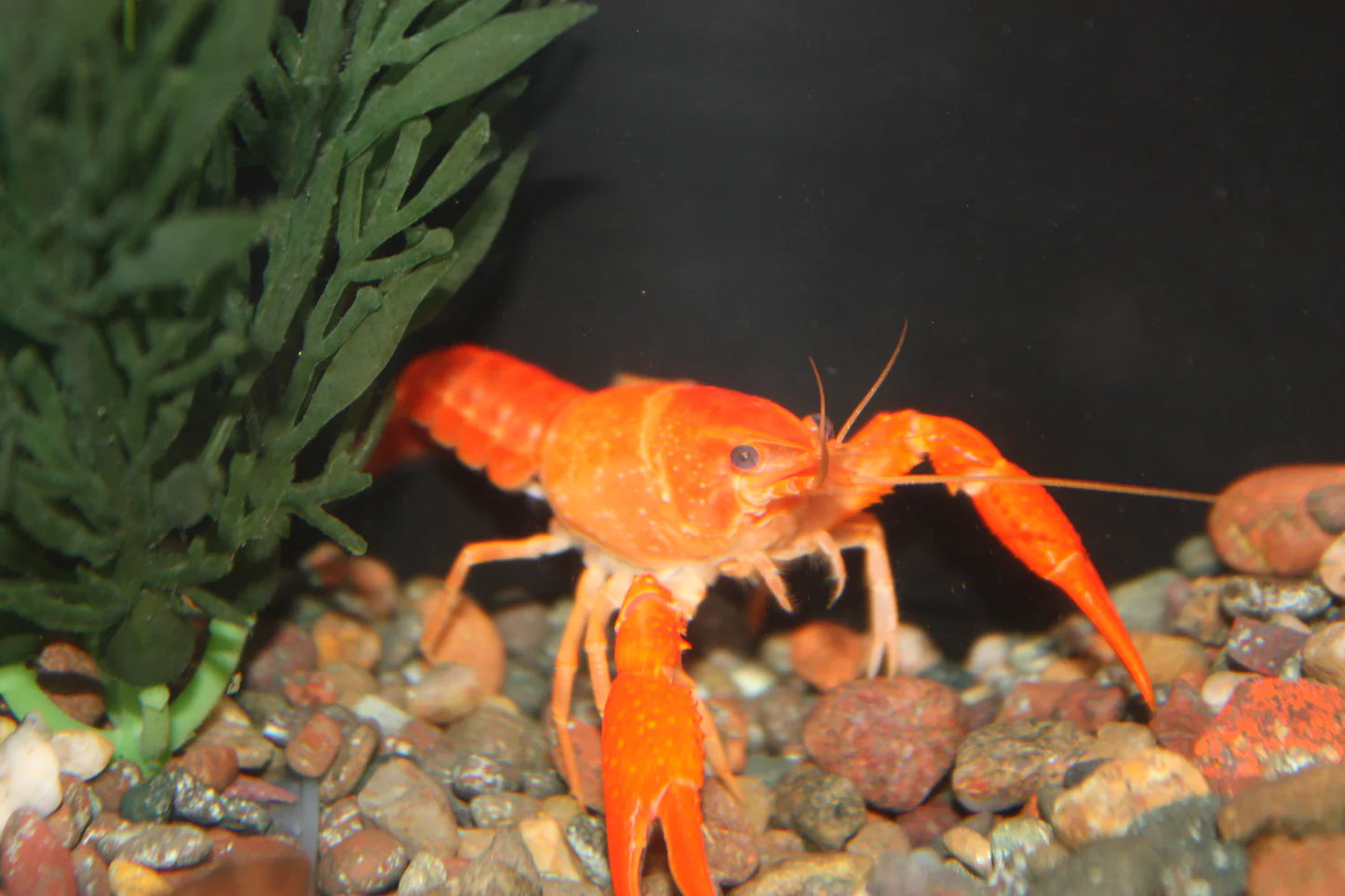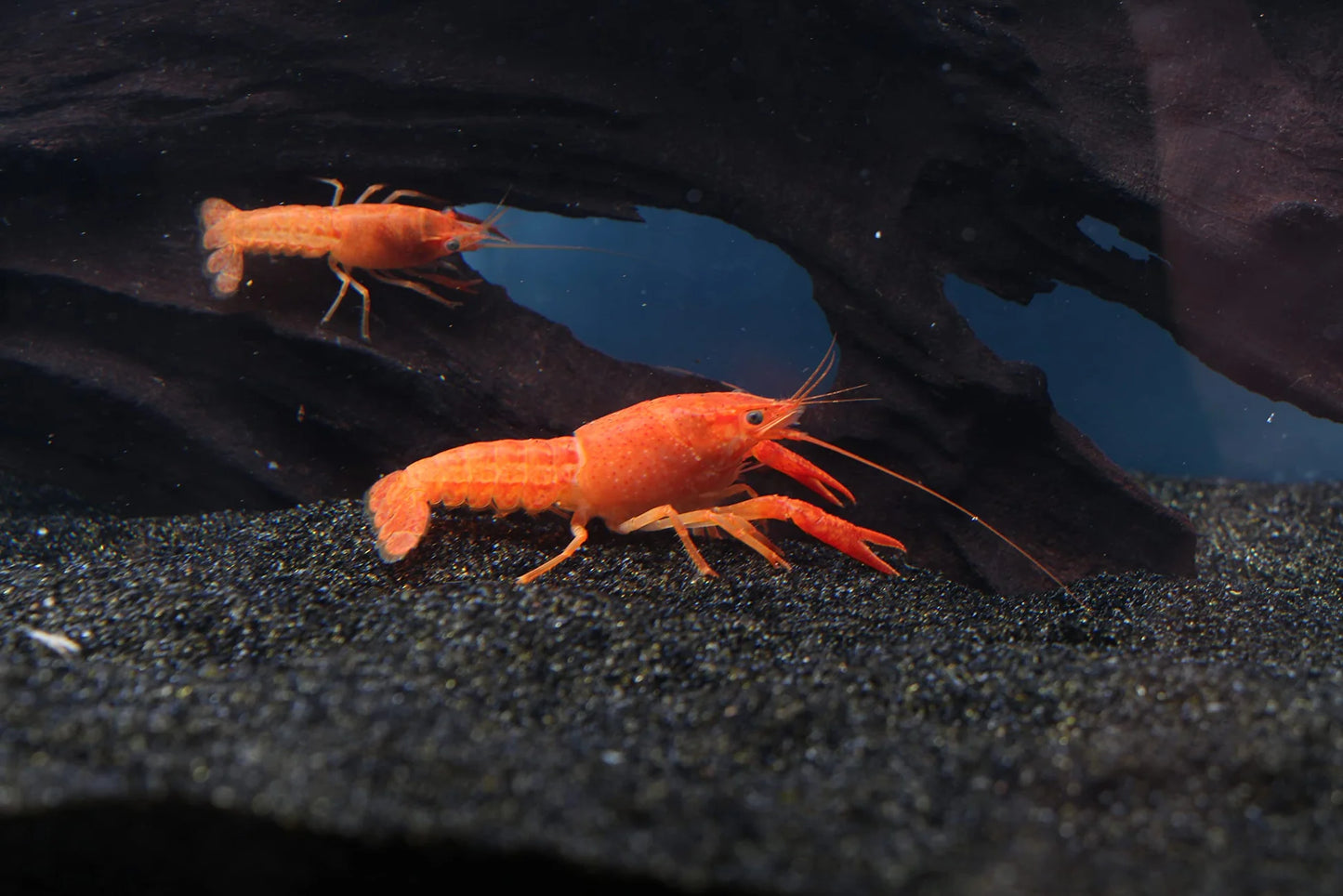Sunburst Orange Crayfish (Cambarellus patzcuarensis 'Orange') - Live Freshwater
Sunburst Orange Crayfish (Cambarellus patzcuarensis 'Orange') - Live Freshwater
Detailed Description
Detailed Description
The Sunburst Orange Crayfish is a vibrant and stunning variety of freshwater crayfish known for its bright orange color, which gives it a glowing, sunburst-like appearance. It is often considered a variant of the orange crayfish, but with a more intense and eye-catching hue that resembles the colors of the sun or a fiery sunset. This variety has gained popularity among aquarium enthusiasts due to its vivid color and intriguing behavior.
Here’s an in-depth look at the Sunburst Orange Crayfish:
Physical Characteristics:
-
Coloration:
- The Sunburst Orange Crayfish is known for its bright orange color, which can range from a soft golden-orange to a more intense tangerine hue. Some individuals may also have a slight yellowish or reddish tint in certain areas, particularly on the claws.
- Its claws (chelae) may feature some variation in color, often appearing a bit darker than the body, with some having a subtle gradient of orange to red.
- Its shell or exoskeleton is smooth and shiny, contributing to its vibrant appearance under proper aquarium lighting.
-
Size:
- The Sunburst Orange Crayfish grows to about 4 to 6 inches (10 to 15 cm) in length, with males being slightly larger than females.
- Its size is quite manageable, making it an ideal species for medium to large-sized aquariums.
-
Physical Features:
- Like all crayfish, the Sunburst Orange Crayfish has a hard exoskeleton, which it will molt periodically to grow.
- Its claws are large and robust, used for digging, defense, and territorial displays.
- It has long antennae and sensory feelers that it uses to navigate its environment and search for food.
Care and Habitat:
-
Water Conditions:
- pH: Ideal water pH range is between 7.0 and 8.0, which reflects their preference for slightly alkaline conditions.
- Temperature: These crayfish thrive in temperatures ranging from 65°F to 75°F (18°C to 24°C), making them suitable for tropical freshwater aquariums.
- Hardness: They prefer moderately hard water (with some calcium content) to help maintain their exoskeleton.
- Filtration: A high-quality filtration system is important, as crayfish can create waste and will benefit from a clean, stable environment.
-
Tank Setup:
- Tank Size: The minimum tank size for a Sunburst Orange Crayfish is typically 20 gallons, although a larger tank is preferable, especially if you plan to keep more than one crayfish or have other fish in the tank.
- Substrate: A sand or gravel substrate is ideal for crayfish, as they like to dig and burrow. Ensure that the substrate is smooth to avoid injuring their delicate exoskeleton.
- Hiding Spaces: As solitary and territorial creatures, Sunburst Orange Crayfish require plenty of hiding spots such as rock caves, PVC pipes, or decorative driftwood to retreat to. These hiding spots will help reduce stress and prevent aggression.
- Aquascaping: Crayfish can sometimes disturb plants, but hardy plants like Java Fern, Anubias, or Java Moss can work well in their tank. Just be aware that they might dig and uproot more delicate species.
Diet:
- The Sunburst Orange Crayfish is an omnivore, and its diet should consist of both plant and animal-based foods:
- Algae: Crayfish love to graze on algae, so they can help naturally control algae growth in your tank.
- Protein: They will eat dried shrimp, bloodworms, brine shrimp, and other protein-rich foods.
- Vegetables: Blanched vegetables like zucchini, spinach, peas, and lettuce are excellent additions to their diet.
- Commercial Crayfish Pellets: You can also provide specially designed pellets or sinking foods made for crayfish.
- Detritus: Sunburst Orange Crayfish will scavenge the substrate for bits of leftover food, detritus, and dead plant matter.
Behavior and Socialization:
-
Territorial:
- Crayfish, including the Sunburst Orange variety, are inherently territorial and can become aggressive, especially toward other crayfish or fish that invade their space.
- They may display aggressive behaviors such as claw waving or chasing other animals that enter their territory.
- If keeping multiple crayfish in the same tank, it’s essential to provide plenty of hiding spaces and create separate territories to minimize conflict.
-
Activity:
- The Sunburst Orange Crayfish is generally nocturnal, meaning it is most active during the night. It may spend the day resting in its hiding spots and come out at night to forage or explore.
- These crayfish are good climbers, so it’s important to have a secure tank lid to prevent them from escaping.
-
Interaction with Fish:
- While the Sunburst Orange Crayfish can live with peaceful fish, you should be cautious when selecting tank mates. Crayfish may attempt to hunt smaller fish, especially slow-moving species that hang out near the substrate.
- It’s best to avoid keeping them with very small fish or those that spend time near the bottom of the tank, like neon tetras or guppies.
- Hardy fish such as guppies, zebra danios, and corydoras catfish are usually safe, provided the crayfish have plenty of space and hiding spots.
Breeding:
-
Reproduction:
- Female Sunburst Orange Crayfish can carry their eggs on their abdomen until they hatch, a process that can take several weeks.
- Once the eggs hatch, the young juvenile crayfish will look like tiny versions of the adults but will be very vulnerable to being eaten by larger fish or even their own parents.
- To protect young crayfish, you may need to provide a separate breeding tank or secure the juveniles in a net until they grow large enough to survive.
Molting:
- Like all crayfish, the Sunburst Orange Crayfish will molt its exoskeleton as it grows. During the molting process, the crayfish will appear sluggish and vulnerable. It’s essential to avoid disturbing them during this time, as they will be unable to defend themselves and are prone to injury.
- Crayfish often eat their molt to reclaim valuable nutrients and minerals. The exoskeletons will be discarded in the tank, so it’s a good idea to remove them after the crayfish has finished eating the molt.
The Sunburst Orange Crayfish is a visually stunning and fascinating creature to keep in an aquarium. With its brilliant orange color, scavenging nature, and unique behaviors, it can add a lot of personality and vibrancy to a tank. However, it’s important to remember that they are territorial and can be aggressive toward tank mates, especially other crayfish and smaller fish. With proper care, a secure tank setup, and compatible tank mates, the Sunburst Orange Crayfish can thrive and provide years of enjoyment in your freshwater aquarium.
Product features
Product features
Materials and care
Materials and care
Merchandising tips
Merchandising tips
Share












